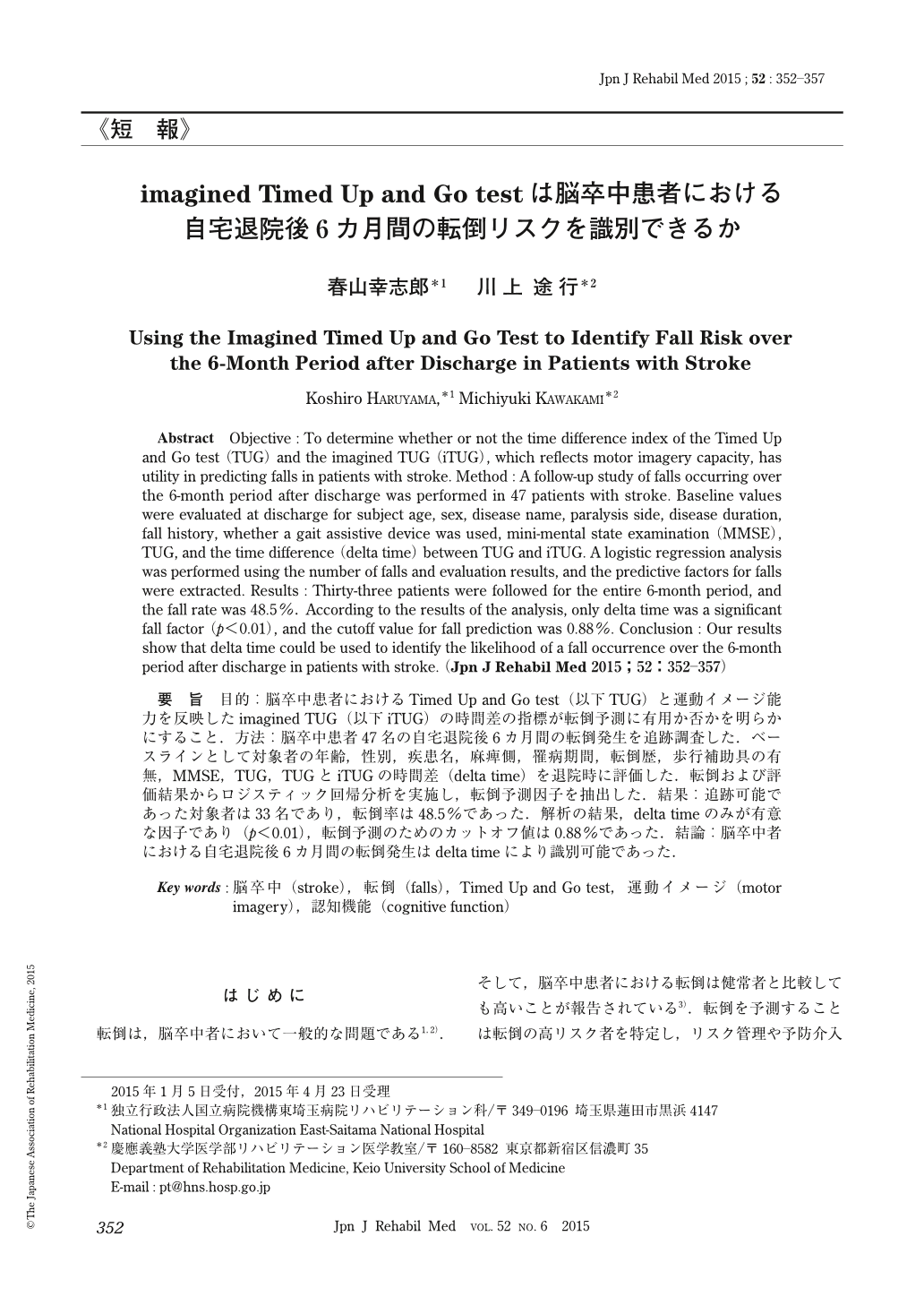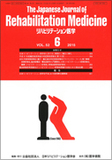Japanese
English
- 販売していません
- Abstract 文献概要
- 1ページ目 Look Inside
- 参考文献 Reference
要旨 目的:脳卒中患者におけるTimed Up and Go test(以下TUG)と運動イメージ能力を反映したimagined TUG(以下iTUG)の時間差の指標が転倒予測に有用か否かを明らかにすること.方法:脳卒中患者47名の自宅退院後6カ月間の転倒発生を追跡調査した.ベースラインとして対象者の年齢,性別,疾患名,麻痺側,罹病期間,転倒歴,歩行補助具の有無,MMSE,TUG,TUGとiTUGの時間差(delta time)を退院時に評価した.転倒および評価結果からロジスティック回帰分析を実施し,転倒予測因子を抽出した.結果:追跡可能であった対象者は33名であり,転倒率は48.5%であった.解析の結果,delta timeのみが有意な因子であり(p<0.01),転倒予測のためのカットオフ値は0.88%であった.結論:脳卒中者における自宅退院後6カ月間の転倒発生はdelta timeにより識別可能であった.
Abstract Objective : To determine whether or not the time difference index of the Timed Up and Go test (TUG) and the imagined TUG (iTUG), which reflects motor imagery capacity, has utility in predicting falls in patients with stroke. Method : A follow-up study of falls occurring over the 6-month period after discharge was performed in 47 patients with stroke. Baseline values were evaluated at discharge for subject age, sex, disease name, paralysis side, disease duration, fall history, whether a gait assistive device was used, mini-mental state examination (MMSE), TUG, and the time difference (delta time) between TUG and iTUG. A logistic regression analysis was performed using the number of falls and evaluation results, and the predictive factors for falls were extracted. Results : Thirty-three patients were followed for the entire 6-month period, and the fall rate was 48.5%. According to the results of the analysis, only delta time was a significant fall factor (p<0.01), and the cutoff value for fall prediction was 0.88%. Conclusion : Our results show that delta time could be used to identify the likelihood of a fall occurrence over the 6-month period after discharge in patients with stroke.

Copyright © 2015, The Japanese Association of Rehabilitation Medicine. All rights reserved.


